What Is Z-Wave Technology?
by Robert Fox
Z-Wave technology is a wireless RF (radio frequency)-based communications protocol which is used in today's homes to control various devices remotely.
Contents
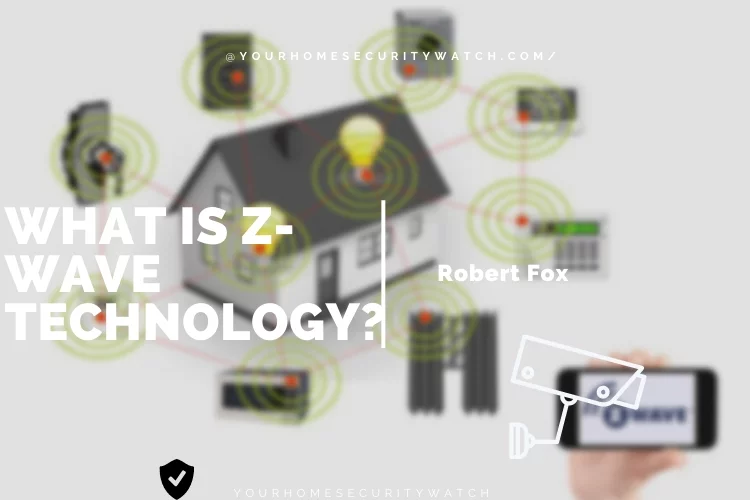
So, if you have a Z-Wave home automation hub of some kind, the hub can send and receive messages from various devices via Z-Wave, and allow you to control those devices via remote devices like smart phones or tablets.
Devices can be anything from smart deadbolt locks, to alarms, to security cameras, to lights, and an increasing number of devices nowadays that support Z-Wave.
Let's hear from Paul Ingram of Wilson's Security and hear his take on what Z-Wave technology involves.
What Devices Are Z-Wave Compatible?
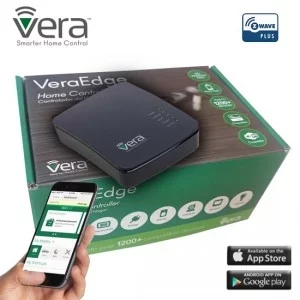
You will know a Z-Wave device because its usually labeled on the box that it comes in, or it will be listed prominently as a feature when you buy it online.
For instance, the Vera Edge (pictured right) is a Z-Wave friendly smart home controller and you can see that it has the Z-Wave symbol on the upper right, which is typically a "Z" with some radio waves emanating from it.
The Vera Edge itself can control a multitude of smart home devices that are used for security or otherwise, thanks to Z-Wave technology.
For Z-Wave compatible devices, this technology can easily transform a standalone device into an intelligent network device that can be controlled and monitored easily.
It should be noted that the larger your Z-Wave network is, the more powerful and efficient the overall signal will be, as added network repeaters only serve to bolster your Z-Wave network's power - almost like getting a bigger antenna for your radio station.
This is very different from your typical WIFI signal, which loses power as your kids all decide to stream movies at the same time. Not only will this cause your internet to slow down, but for security purposes, its definitely not going to help!
The Benefits Of Z-Wave
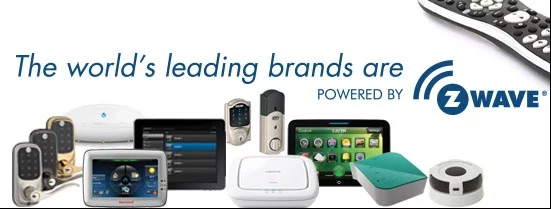
Z-Wave technology delivers high quality networking at a fraction of the cost of other technologies by focusing on narrow bandwidth applications and substituting costly hardware with innovative software solutions.
One of the key features of Z-Wave technology is the routing capability of all the nodes in the network. Z-Wave automatically routes the signal from one node to the next, thereby making its range virtually unlimited.
For example, when leaving the house, the homeowner activates the alarm, turns off the lights, and lowers the thermostat from the garage - all with a touch of one button!
Z-Wave automatically routes from one device to the next until everything in the house is off and the alarm is set. It also minimizes noise and distortion problems caused by architectural obstacles and "radio dead spots" using innovative transmission techniques such as two-way acknowledgment and alternative route-seeking.
For example, from their master bedroom, the user tries to turn off the light in the garage.The direct transmission to the garage slab is blocked by reflections from the stainless steel refrigerator in the kitchen. Z-Wave automatically selects an alternative route through the hallway thermostat in the power outlet in the utility room, thereby securing that the command is carried out, and a confirmation is then sent back to the user.
Z-Wave provides vastly improved coverage and reliability with virtually unlimited range.
Is A Z-Wave Signal The Same As A WIFI Signal?
To clarify something which is often asked, no, Z-Wave is not the same as WIFI, which is another communications protocol used with today's technology. We will discuss the differences between Z-Wave and WIFI presently, as there is some confusion around this topic.
Z-Wave Vs. WIFI
While WIFI is readily available to the average consumer, when it comes to home automation, not to mention home security, WIFI is simply not as reliable as Z-Wave. Z-Wave has been designed for the controlling of devices, which is why we prefer it for home security of all kinds.
As you probably know by now, WIFI is excellent for sending and receiving messages using the transfer protocol that it has, but it was never really designed to be put in control of a myriad of automated home devices to begin with.
Here is a video that takes you on a tour of one man's home and its Z-Wave devices. Consider it an extended intro to Z-Wave if you want to learn more about the technical side of Z-Wave.
As we mentioned before, Z-Wave has the ability to smartly find the most effective route to communicate to each of the devices in its network. It has a strong network, especially when there are more devices added. With WIFI, there can be a problem with the message reaching the router and then communicating by way of TCP/IP to a device.
If the devices in the network are not positioned correctly, or there are dead zones for the signal to pass through, this only makes matters worse when it comes to WIFI, and the signal will not reach its destination. When it comes to home security, this can be extremely problematic. In addition, because most families use media for streaming such as smart phones, there can be problems due to overuse of the wireless signal from several devices.
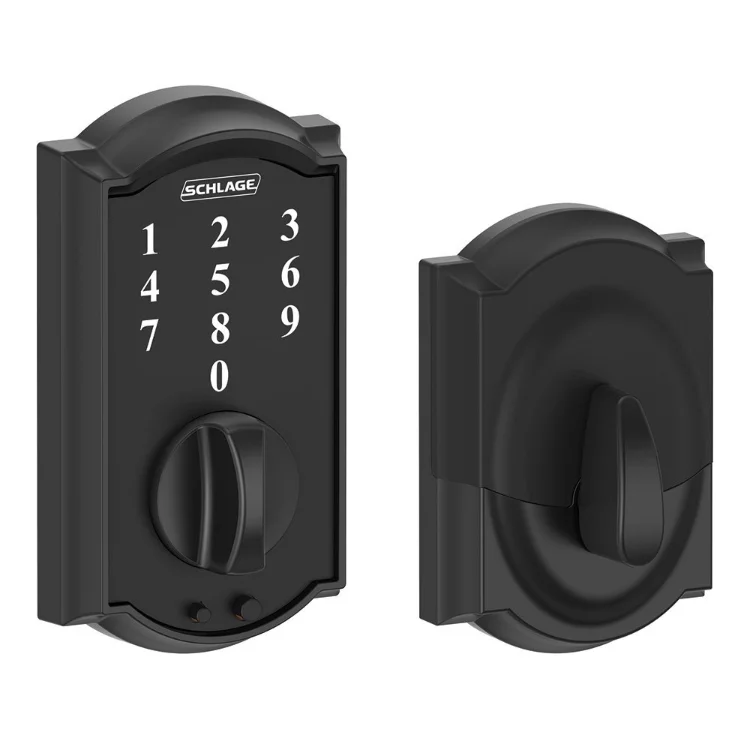
These devices, while they work fine with Z-Wave because it is designed to work extensively with certain dedicated devices, it doesn't have to contend with the glut of congestion that WIFI channels experience.
Also, because Z-Wave operates on a "meshed" network, and has a stronger signal which extends outward, and it can reach much further than WIFI, easily controlling every device in your home on a dedicated channel. While this Z-Wave data channel may not be able to stream media, it is a designated data channel which is meant to be used with home automated devices, rather than download movies, play Pokemon GO, or things of this sort.
As we have said, Z-Wave devices are generally much more reliable than WIFI when it comes to home automation and home security. On top of that, these devices are much easier when it comes to battery life. They tend to last months and even years, due to the fact that that only turn on when needed, and then go "back to sleep".
This goes for all sorts of Z-Wave devices, from locks, to smoke alarms, to lights. We will also say that Z-Wave devices / hubs are cheaper than the alternatives such as Zigbee and WIFI.
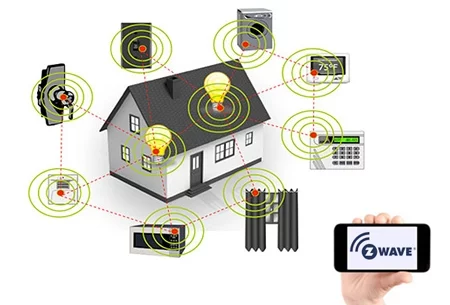
But it isn't all peaches and cream when it comes to Z-Wave. There are also reasons that some people not prefer it. Why? One reason is that Z-Wave devices are more difficult to upgrade. If you are using WIFI, we all know that everything is fairly simple to get a hold of and install, although it is, as we mentioned, not as secure or as dedicated as your typical Z-Wave device / hub.
That said, Z-Wave is not something everyone is familiar with, and this makes upgrading your devices more difficult because you are no longer dealing with WIFI types of transfers (eg. TCP/IP). Z-Wave itself is just a foreign concept to some people, which is why we wrote this article in the first place!
 |
 |
 |
 |

About Robert Fox
Rob Fox is a former hydro worker who used to teach self defence in Miami for 10 years. He's currently enjoying his retirement, playing cribbage and golf with his buddies, locksmithing and home security in his spare time. Rob is an avid reader, and has even written a few books on the subject of self defence.
Thoughts on "What Is Z-Wave Technology?"
 |
 |
 |
 |
You can Get FREE Gifts. Furthermore, Free Items here. Disable Ad Blocker to receive them all.
Once done, hit anything below
 |
 |
 |
 |